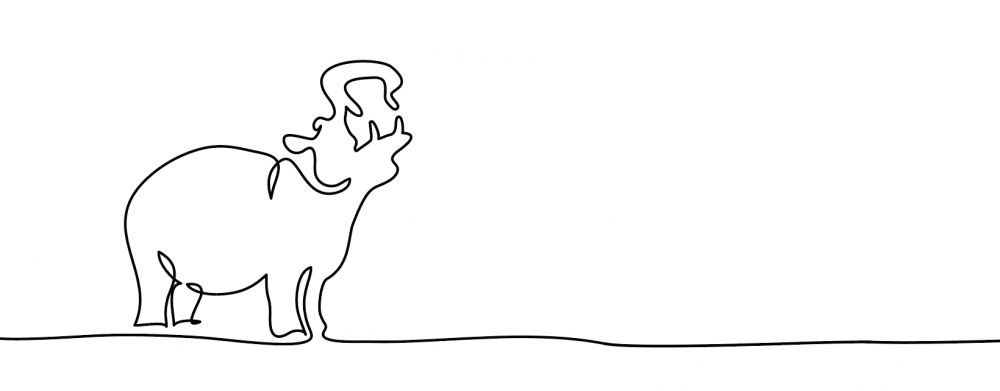
Can a handbag change the world?
April 5, 2019
Once upon a time there was a hippo in Khaudum
April 24, 2019There are clearly two types of people in the world: those who like to camp and those who don’t. And yet, it does seem as if we need to add a third category – the group of people who have never camped before and don’t know if they like camping in the first place. Don’t know? There’s only one way to find out, really… Go camping. But before you throw yourself and your innocent significant other in the car and head out, allow us to give you a few tips. If followed correctly they will prevent you from finding yourself, after one mishap too many, in the second (dreaded) group of people.
Start small
Before you rush off and buy the entire camping section of your closest CYMOT, first things first. To have a memorable camping experience doesn’t mean you have to start with the latest and most expensive gadgets. Yes, toys can make the camping experience more interesting, but we would suggest putting down the wads of cash only once you have established that this is indeed for you.What you want to start with are the basics. You need a place to put your head down at night, and food to put in your belly. The first part of this equation translates into accommodation in the form of a tent, which you can purchase to be waterproof or not (we recommend waterproof; you never know when a thunderstorm will surprise you). These days you can even get those pop-up ones, which save some time when setting up, although you might have to keep the instruction manual nearby to fold them up again. Then, a camping mattress. When you are just starting out, rather go for a fold-up or roll-up mattress. As for the bedding, a sturdy and durable sleeping bag is every camper’s best friend, and it will last for years! Pop a pillow in with the rest of this sleep gear.
Keep your food fresh
Now, the food. It is important to know that you don’t need a mobile refrigerator to go camping, even though it is a great luxury and “nice to have”. But a much cheaper alternative is filling a large enough cooler box with ice bricks (those liquid-filled blocks you freeze beforehand at home). The next trick is to buy ice cubes along your way to fill up your cooler box as needed. Keep the cooler box closed during the day, and when you do open it try to take out what you need all at once so that the temperature stays as low as possible. Keep your snacks in a different container, to reach separately.
Be comfortable
The quickest way to be put off from a new experience is to be uncomfortable. For this reason it is important to ask yourself a few very basic questions. How do you feel about doing without a shower for a day? Or even, and bear with us here because it is important, about using nature for when nature calls? Now you start to get an idea of the kind of camping trip you should go for. Some campsites have everything from hot showers to flushing toilets and swimming pools. Also, always have a headlamp with you, no matter where your campsite is. There is nothing worse than being without light and scurrying about like a nocturnal animal (minus the advanced vision). One last note on comfort: always pack a warm jacket when you go camping in Namibia. This is a desert country and like any desert it gets very cold at night, even during the summer.
The most important thing
Fire. No camping trip is complete without a campfire. If you have never attempted making one, consider taking along a gas bottle stove to cook on. It’s a good idea to start a fire while the sun is still out, because you want the fire going strong by the time it gets dark. You’ll need at least one bag of wood, and a box of Omuriro to help your fire get started.
Don’t forget to…
…do your research! For your first camping trip we strongly suggest you don’t travel alone, and if you do, that you stay within reach of cellular coverage. Even better, pick a destination close to home. Find out from friends and family about campsites that they can recommend.
What to pack:
- Warm jacket (NB!)
- Towel, hat, sunscreen
- Mosquito repellent
- Closed shoes for evenings
- Camera and/or cell phone
- Chargers, adaptors and extension leads (sometimes the power points can be far from your campsite)
- Headlamps
- Cooler box
- Snack box/basket
- Canned food
- Dry food (pasta, rice, cereal, etc.)
- Water (lots of it! This is probably the most important item on your list)
- Travel mugs
- Cutlery and crockery (metal or plastic is best)
- Braai grid and tongs
- Wood, Omuriro
and matches - Pot and pan
- Washing-up liquid, sponges and kitchen towels
- Toilet paper (even if you are going somewhere with flushing toilets)
- Tent, camping chair, table
- Sleeping bag or bedding, plus pillows


